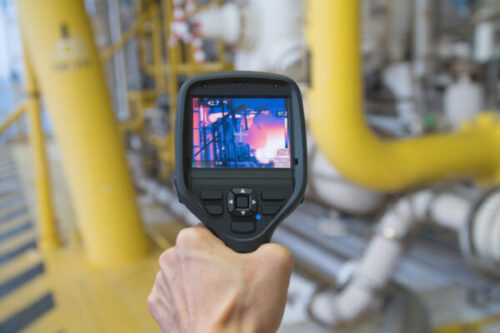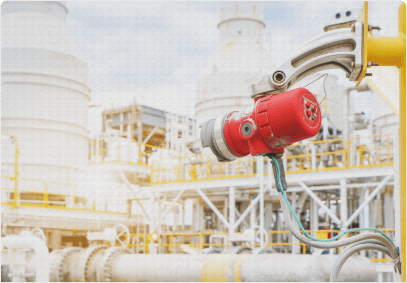The 6-Minute Rule for Roar Solutions
The 6-Minute Rule for Roar Solutions
Blog Article
Roar Solutions for Beginners
Table of ContentsNot known Incorrect Statements About Roar Solutions Roar Solutions Things To Know Before You BuyThe Single Strategy To Use For Roar Solutions
In order to protect installations from a prospective explosion an approach of evaluating and identifying a potentially hazardous location is required. The objective of this is to ensure the correct selection and installation of tools to eventually prevent an explosion and to make certain safety and security of life.
(https://pinshape.com/users/7197164-roarsolutions#prints-tab-open)
No devices must be set up where the surface temperature of the equipment is higher than the ignition temperature level of the given threat. Below are some common dust dangerous and their minimal ignition temperature level. Coal Dust 380C 225C Polythene 420C (thaws) Methyl Cellulose 420C 320C Starch 460C 435C Flour 490C 340C Sugar 490C 460C Grain Dirt 510C 300C Phenolic Material 530C > 450C Aluminium 590C > 450C PVC 700C > 450C Residue 810C 570C The probability of the risk existing in a concentration high sufficient to trigger an ignition will certainly vary from area to area.
In order to classify this danger an installment is divided into areas of danger depending upon the quantity of time the dangerous exists. These areas are described as Areas. For gases and vapours and dirts and fibers there are three zones. Area 0 Area 20 A dangerous atmosphere is extremely likely to be present and may exist for extended periods of time (> 1000 hours per year) and even constantly Zone 1 Zone 21 A harmful environment is possible however unlikely to be present for long periods of time (> 10 450 C [842 F] A classification of T6 means the minimum ignition temperature level is > 85 C [185 F] Harmful area electric tools maybe designed for usage in higher ambient temperatures. This would certainly suggested on the rating plate e.g. EExe II C T3 Ta + 60C( This suggests at 60C ambient T3 will not be gone beyond) T1 T1, T2, T3, T4, T5, T6 T2 T2, T3, T4, T5, T6 T3 T3, T4, T5, T6 T4 T4, T5, T6 T5 T5, T6 T6 T6 A T Course rating of T1 indicates the optimum surface area temperature generated by the tool at 40 C is 450 C. Assuming the linked T Course and Temperature ranking for the equipment are appropriate for the location, you can always use a tool with an extra rigid Division ranking than needed for the location. There isn't a clear response to this concern sadly. It really does depend upon the sort of devices and what repairs need to be performed. Devices with specific test treatments that can not be performed in the field in order to achieve/maintain 3rd party rating. Need to return to the factory if it is prior to the devices's solution. Area Repair By Authorised Personnel: Challenging screening might not be required nonetheless details procedures may need to be complied with in order for the tools to maintain its third event rating. Authorized personnel should be utilized to carry out the work correctly Fixing have to be a like for like replacement. New component have to be thought about as a direct replacement needing no special testing of the devices after the repair work is complete. Each item of equipment with an unsafe ranking ought to be examined independently. These are outlined at a high degree listed below, but also for even more comprehensive information, please refer directly to the standards.
All About Roar Solutions
The tools register is an extensive database of tools documents that includes a minimum set of fields to determine each thing's area, technical parameters, Ex classification, age, and ecological data. The proportion of Detailed to Close assessments will be determined by the Tools Threat, which is assessed based on ignition risk (the probability of a resource of ignition versus the chance of a combustible ambience )and the harmful location classification
( Zone 0Area 1, or 2). Implementing a durable Risk-Based Inspection( RBI )method is crucial for ensuring compliance and safety in handling Electric Equipment in Hazardous Locations( EEHA).
Not known Facts About Roar Solutions

In regards to explosive threat, a harmful area is a setting in which an explosive ambience is present (or might be expected to be existing) in amounts that need unique safety measures for the construction, installment and use equipment. hazardous area course. In this post we explore the difficulties encountered in the work environment, the threat control procedures, and the called for proficiencies to function safely
It is a repercussion of modern life that we produce, save or deal with a variety of gases or fluids that are deemed combustible, and a series of dusts that are considered flammable. These substances can, in specific problems, create explosive environments and these can have significant and tragic repercussions. The majority of us recognize with the fire triangle get rid of any one of the 3 Read Full Report aspects and the fire can not happen, yet what does this mean in the context of hazardous areas? When breaking this down right into its most basic terms it is basically: a combination of a certain amount of launch or leak of a specific compound or material, blending with ambient oxygen, and the presence of a source of ignition.
In most instances, we can do little about the levels of oxygen in the air, but we can have significant influence on resources of ignition, for instance electric tools. Unsafe locations are recorded on the dangerous area classification drawing and are identified on-site by the triangular "EX" indicator. Below, among other crucial details, areas are split into 3 kinds depending upon the danger, the likelihood and duration that an eruptive ambience will exist; Zone 0 or 20 is considered the most dangerous and Area 2 or 22 is regarded the least.
Report this page